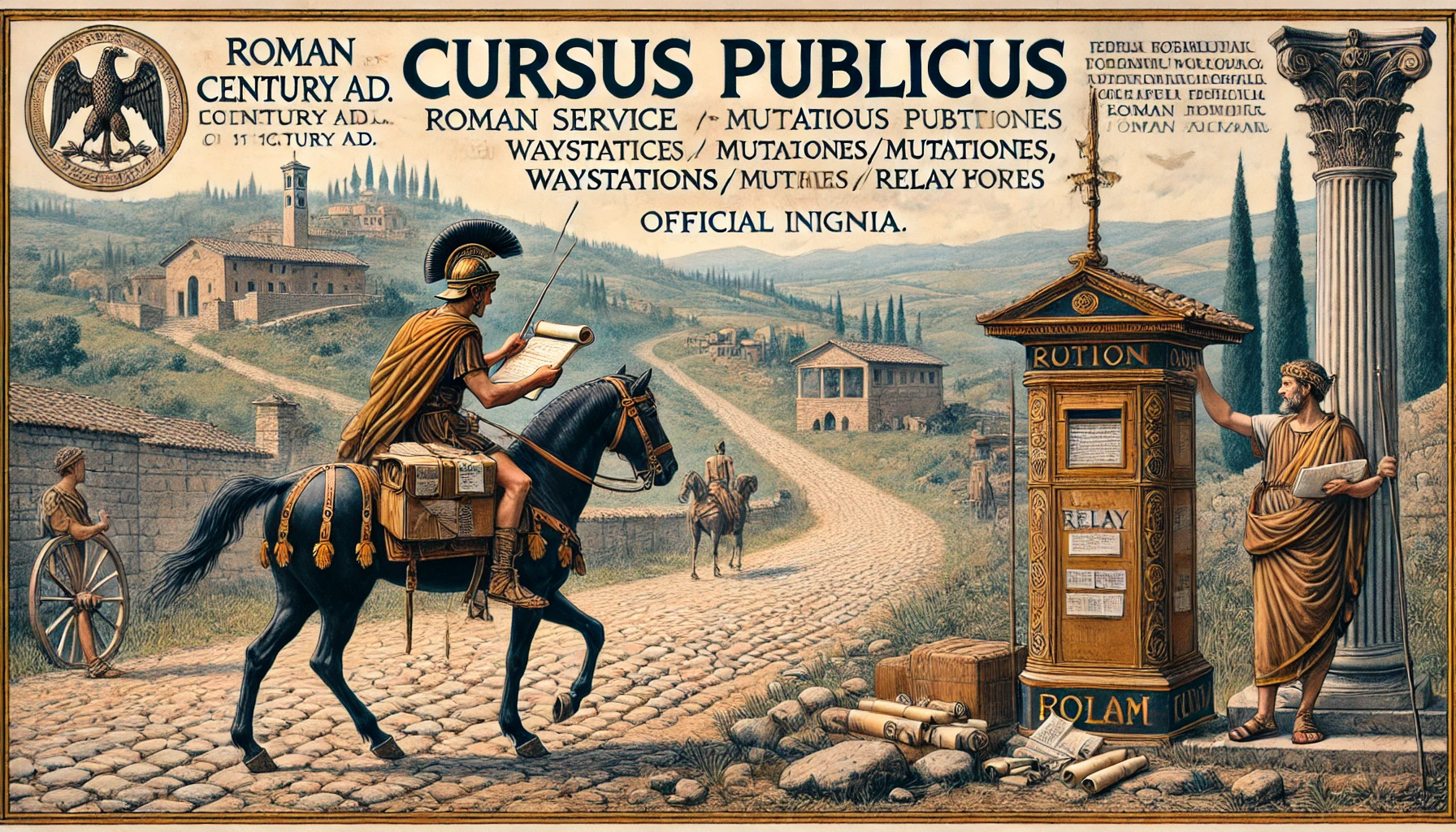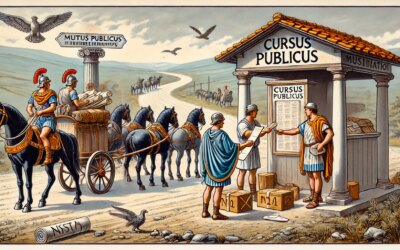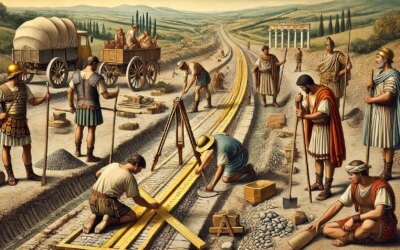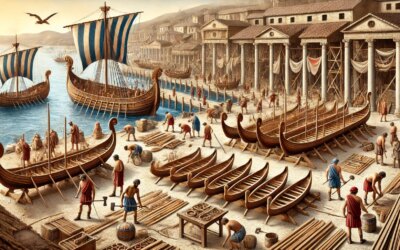Messages Across an Empire
In the 1st century AD, the Roman Empire stretched from the windswept moors of Britannia to the sands of Arabia. Yet even across such immense distances, messages, decrees, and dispatches moved with remarkable speed and precision. The secret behind this administrative marvel? The cursus publicus—Rome’s state-run courier and postal system. An extraordinary innovation in governance and infrastructure, it was the lifeblood of imperial communication.
Origins and Purpose
The cursus publicus, which translates to “public way” or “state service,” was formally organized under Emperor Augustus around 20 BC. While earlier republics relied on private messengers or ad hoc arrangements, Augustus created a system that was centralized, funded by the state, and designed to support imperial control.
The system’s primary function was not to carry personal letters, but to ensure that imperial edicts, military orders, census reports, and intelligence could flow swiftly between Rome and the provinces. Governors, legates, and tax officials relied on it heavily—and its efficiency helped cement Rome’s administrative dominance.
Infrastructure and Organization
The cursus publicus depended on the famed Roman road network, which by the 1st century AD extended over 80,000 kilometers. Roads were paved with stone and graded for efficient travel, with milestones (milliaria) marking distances and major waypoints.
Key to the system’s operation were two types of stations:
- Mutationes: Simple waystations where couriers could change horses and briefly rest.
- Mansiones: Larger lodgings with food, fresh horses, and shelter, often located 25–30 km apart.
These stations were supported by local communities, funded by provincial taxes, and overseen by officials known as praefecti vehiculorum.
The Couriers and Their Equipment
Roman couriers, often known as cursores, were skilled riders capable of covering hundreds of kilometers in a matter of days. Relay systems allowed for nonstop travel by switching mounts. Couriers carried official scrolls sealed with wax and stamped with insignia to verify authenticity.
They wore travel cloaks and carried credentials authorizing use of the state system. Known as diplomata, these bronze tablets bore the emperor’s mark and detailed the courier’s route, purpose, and access privileges.
Security and Reliability
The cursus publicus was exclusively reserved for official state business. Unauthorized use was punished severely, as the system’s integrity was vital to imperial control. Roads were patrolled by soldiers, and documents were regularly checked at stations to prevent misuse.
Despite occasional delays due to weather, war, or rebellion, the system maintained an exceptional level of reliability. In times of crisis, it allowed the emperor to coordinate far-flung legions and enforce law across borders.
Economic and Political Impact
The cursus publicus enabled the rapid collection of taxes, dispatch of legal decisions, and mobilization of troops. It facilitated diplomacy and propaganda, allowing imperial decrees to reach even the remotest corners of the empire within days or weeks.
Its impact wasn’t merely political—by ensuring safe travel routes and logistical networks, it supported trade, fostered economic integration, and contributed to the Romanization of provinces.
Notable Examples and Performance
Records from the reign of Hadrian indicate that messages could travel up to 80-100 km per day using the cursus publicus. Pliny the Elder and Suetonius mention its usage in their writings, praising its efficiency and scale.
The system enabled events like the swift relay of news about military victories, royal deaths, and natural disasters. Emperors such as Trajan and Septimius Severus improved and expanded the network to meet growing demands.
Challenges and Decline
Over time, the cursus publicus became expensive to maintain. By the 3rd century AD, economic pressures and administrative corruption weakened its reliability. Local elites often resisted providing resources, and station upkeep declined. Though Diocletian and Constantine introduced reforms—including a new gold-based tax system to support it—the cursus never regained its former glory.
Eventually, with the fall of the Western Roman Empire, the infrastructure collapsed. In the East, however, Byzantine emperors maintained a version of the cursus into the medieval period.
The Enduring Legacy
The cursus publicus stands as one of Rome’s most visionary logistical achievements. Its concept inspired future postal systems, from the Byzantine cursus velox to the Islamic caliphates and European royal mail routes.
Its influence endures not only in infrastructure and governance but in the idea that an empire—or any large organization—depends on the swift and secure flow of information.
Rome’s Voice Across the World
Whether carrying a command from Caesar, a census report from Gaul, or a warning from the eastern frontier, the couriers of the cursus publicus were the messengers of an empire. Their horses’ hooves echoed along stone roads that stretched beyond the horizon—paths carved by ambition, held by discipline, and animated by the Roman belief that no distance was too great to conquer.






